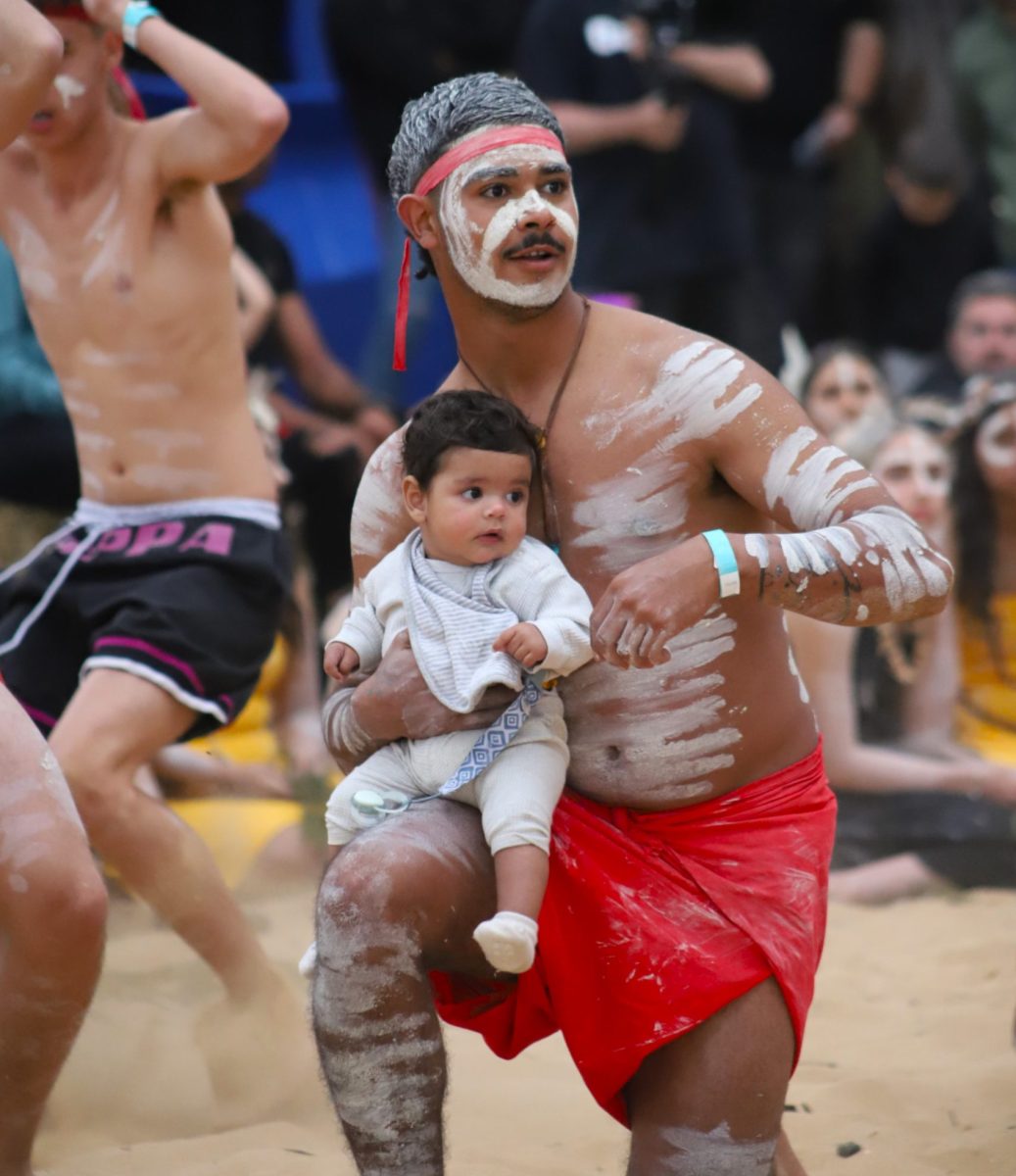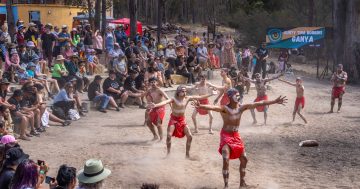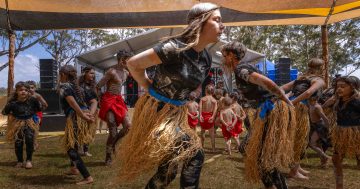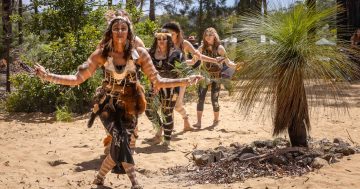
The smoking ceremony and Duurunu Miru Dancers at the opening of Giiyong Festival 2024. Photo: David Rogers Photography.
The Giiyong Festival 2024 at Jigamy on Thaua country was full of joy as more than 2500 people travelled far and wide to connect and share culture. There was laughter, colour and a stellar line-up of musicians and presenters.
High-profile hip hop artists BARKAA, Nooky and Kobie Dee were highlights of the festival on Saturday 9 November, along with blues-rock favourite Benny Walker, and a comprehensive bill of local acts such as the Djidjarns, Ron “Callo” Callaghan, Michelle Russell, and Dale Robert Huddleston and the Riverbank Band.
Multigenerational dance groups were a crowd favourite including Duurunu Miru Dancers from Eden, who were part of the festival’s opening ceremony, and the Gadhu Dancers from Bermagui and Wallaga Lake.
Female dance groups Djaadjawan Dancers and Deua Duraya Dancers were joined by a few of the Bega River Dancers.
It was an emotional and powerful moment for all the dancers when they combined during Dhilwan Yarrkural (Nightfall Dance).

Dancers from Eden and Pambula schools performed at the Giiyong Festival 2024. Photo: David Rogers Photography.
Giiyong Festival offered many opportunities to learn about Aboriginal culture. There were workshops on making possum skin cloaks by Vikki Parsley, weaving by Toni Hill and Aunty Amanda Jane Reynolds, arts and artefacts by Burrunju Aboriginal Arts, and spear making and traditional tools with Uncle Ron Mason and the Bambarang Men’s Group.
Other presenters included Wiradyuri men Darren and Luke Wighton and Wiradyuri Wolgalu man Shane Herrington.
Ray Timbery, co-founder and CEO of Gadhungal Marring, a cultural education provider in Nowra, talked about the principles behind cultural practice and the underlying philosophy.
He delivered a strong message to the audience – to look for similarities and don’t look at what is different between people. “Our old people were always about being one,” he said.
Comedian Sean Choolburra’s didge and dance show was a drawcard. This year, he was joined on stage by Bush Tucker Bunjie, who swore he wanted to attend every future Giiyong Festival.

Uncle BJ Cruse gave the Welcome to Country to open the Giiyong Festival 2024. Photo: David Rogers Photography.
Chef Mark Olive’s cooking demonstrations were very popular, as were the native plant workshops by Clarence Slockee, a regular presenter on ABC TV’s Gardening Australia.
Mr Slockee talked about plants that students at Narooma High School had grown in the school’s native plant nursery. The school’s nursery will be branching into native medicine next year.
Mr Olive and Mr Slockee later got together in conversation in the Monerro Bobberrer Gudu Keeping Place to deliver an Aboriginal perspective on Australia’s bush food and native botanicals industry.
Another festival highlight was Punkaliyarra, a project between women from Roebourne in the Pilbara region of Western Australia and not-for-profit change organisation Big hART.

The Nightfall Dance was a highlight of the Giiyong Festival 2024. Photo: Kate Doust Howarth.
Combining performance, music, narration and dance, it was a very powerful performance based on an ancient story about the strength, relationships and leadership of Indigenous women. It was followed by questions and answers.
The language revival panel discussion was thought-provoking.
Each of the four speakers, Aunty Vivian Mason, Aunty Ellen Munday, Darren Wighton, and Jacob Chant-Morris, are working to revive their respective languages.
They spoke of the importance of language to their identity, as well as its power.
Mr Wighton, who is working with Charles Sturt University to revitalise the Wiradyuri language, said language isn’t just for communication. “It gives you place and meaning, and it gives you purpose.”
Mr Chant-Miller, language consultant and creative director at Gadhungal Marring, said language was magic.
“I think when you speak language, Country understands you,” he said. “It wakes up Country and the ancestors.”

People of all ages were involved in the Nightfall Dance at Giiyong Festival 2024. Photo: Kate Doust Howarth.
The festival was family-friendly and supported by a huge band of Indigenous and non-Indigenous volunteers, sponsors, and stallholders.
Festival-goer Sharon Perry said it was good to see the festival growing.
“At the beginning, there were only a few little tents, but now more organisations are coming and breaking down barriers,” Sharon said.
Sharon was at the festival with Caterina Perry who said it made her proud to see her people walking around and sharing their culture with each other and with the wider community.
“It is beautiful, particularly the young ones and the elders sharing knowledge, and especially on Country.”
Sharon agreed. “The more people that are out on Country, the stories and the elders, it wakes them up, they hear us.”











